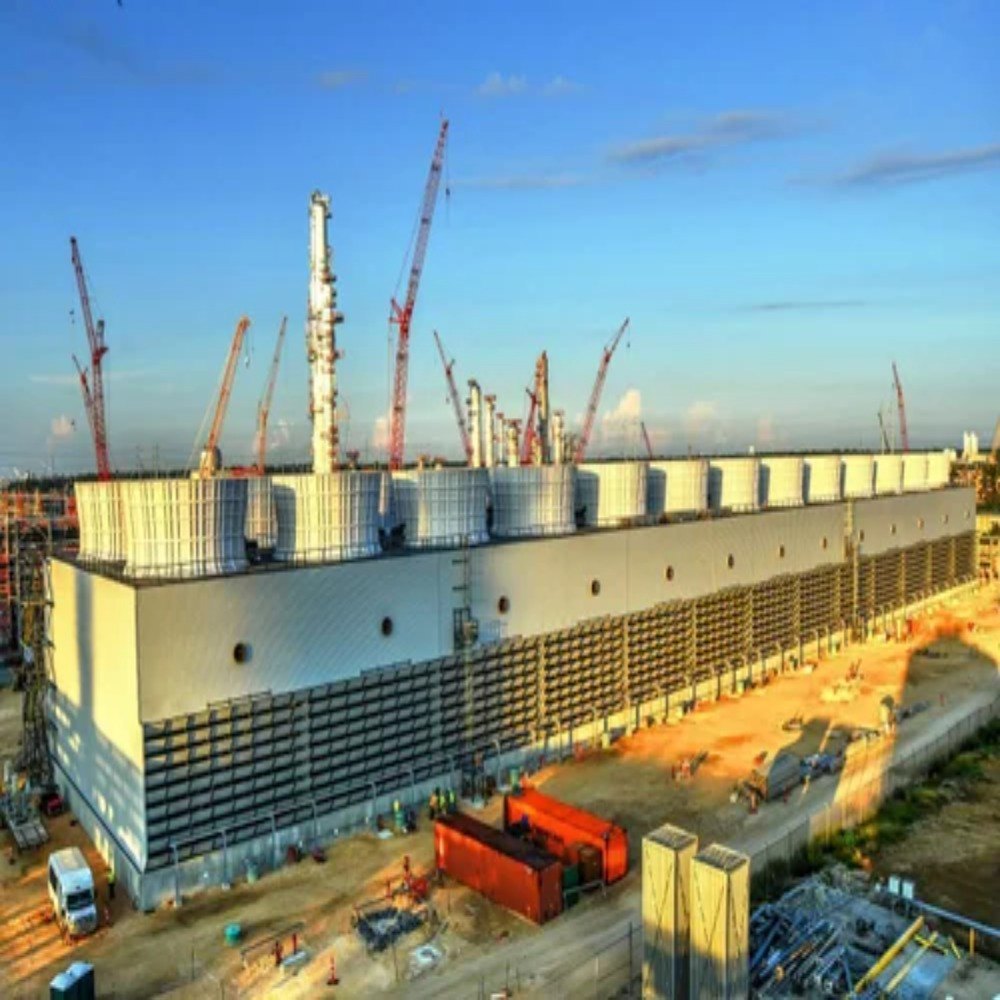Introduction
Cooling towers play a crucial role in many industrial and commercial applications by removing excess heat from processes and systems, ensuring smooth operation. However, as with any mechanical system, cooling towers experience wear and tear over time. Older towers can become less efficient due to outdated components, design limitations, and accumulated damage from years of use. This decline in efficiency often leads to higher operational costs, increased water usage, more frequent maintenance, and even environmental concerns, especially with rising energy and water conservation regulations. Retrofitting offers a viable solution for facilities that want to restore or enhance their cooling tower’s performance without the significant cost and disruption of full system replacement. By upgrading or replacing specific components such as fans, fill media, or water distribution systems, older cooling towers can be modernized to meet current energy efficiency standards, improve reliability, and reduce their environmental impact.
Key Retrofit Options for Cooling Towers
Upgrading Fan Systems
- High-Efficiency Motors: Newer motors can operate at lower power consumption while delivering higher output, helping reduce overall energy costs.
- Fan Blade Optimization: Upgrading to more aerodynamic fan blades can improve airflow, reduce noise, and increase energy efficiency.
- Low Noise Fans: For facilities in noise-sensitive areas, installing low-noise fans can help meet environmental noise regulations while improving airflow.
Installing Variable Frequency Drives (VFDs)
- Precise Control in Variable Loads: VFDs allow for adjusting fan speeds based on seasonal or process-related cooling demands, optimizing energy usage.
- Reduced Mechanical Stress: VFDs gradually ramp up and down fan speeds, reducing the mechanical stress on motors and extending their life span.
- Integration with Building Management Systems: VFDs can be integrated with centralized control systems, enabling automated adjustments and remote monitoring for improved efficiency.
Replacing or Upgrading Fill Media
- High-Performance Fill Material: Advanced materials like PVC or polypropylene fill provide better thermal performance and can withstand harsh environments.
- Anti-Fouling Properties: Some modern fill materials come with anti-fouling or anti-bacterial properties, which reduce biological growth and maintenance needs.
- Cross-Flow or Counterflow Designs: Retrofitting with fill media suited to specific tower designs, such as cross-flow or counterflow, optimizes cooling performance.
Enhancing Drift Eliminators
- High-Efficiency Eliminators: Upgrading to high-efficiency drift eliminators reduces water loss, improving cooling tower water conservation.
- Lower Maintenance Designs: Modern drift eliminators are designed for easy cleaning and require less frequent replacement.
- Improved Airflow: Enhanced drift eliminators can optimize airflow while minimizing water carryover, balancing cooling efficiency and water usage.
Updating Water Distribution Systems
- High-Pressure Nozzles: High-pressure nozzles create finer water distribution, enhancing heat transfer.
- Anti-Clog Nozzles: Retrofitting with anti-clog nozzles minimizes downtime and maintenance associated with water distribution.
- Modular Header Systems: Some retrofit solutions offer modular water distribution headers, allowing for easy maintenance and flexibility in tower operation.
When to Consider Retrofitting
Efficiency Declines
- Rising Energy Costs: Noticing a steady increase in energy bills may indicate the need for efficiency improvements through retrofits.
- Reduced Cooling Capacity: If cooling performance is not meeting operational needs, retrofitting can help restore or even enhance tower performance.
- Inefficient Water Use: Aged cooling towers may consume excess water; retrofits can help control and optimize water use.
High Maintenance Costs
- Frequent Repairs on Core Components: If critical parts, like motors or fill media, need constant maintenance, retrofits can be more cost-effective.
- Downtime Impacting Operations: High downtime for maintenance can affect business operations; retrofitting reduces downtime with more durable parts.
- Increased Labor Costs: Older systems may require more intensive labor for maintenance, which retrofitting can reduce by enhancing reliability.
Environmental or Compliance Requirements
- Water and Energy Efficiency Standards: Many regions mandate specific efficiency levels, and retrofitting can help meet these standards.
- Emissions Regulations: In areas with strict emissions limits, retrofitting can reduce water drift and improve chemical use, helping meet regulatory requirements.
- Noise Compliance: Upgrading fan systems with quieter options can help meet noise regulations, especially in residential or commercial areas.
Benefits of Retrofitting Cooling Towers
Improved Energy Efficiency
- Lower Operating Costs: Energy-efficient retrofits directly translate to lower utility bills, creating long-term savings.
- Reduced Carbon Footprint: By consuming less energy, retrofitted towers contribute to reduced greenhouse gas emissions, supporting sustainability.
- Enhanced Performance in Varying Conditions: Upgrades like VFDs allow cooling towers to adapt to different loads, maximizing energy savings.
Reduced Environmental Impact
- Water Conservation: Retrofit options, like high-efficiency drift eliminators, reduce water loss, aligning with conservation efforts.
- Improved Chemical Usage: Enhanced water distribution can reduce the need for water treatment chemicals, which lowers environmental impact.
- Waste Reduction: With durable materials and components, retrofitting decreases waste generation from frequent component replacements.
Extended Equipment Lifespan
- Longer-Lasting Components: Modern materials and efficient designs enhance the life of core components, delaying replacement.
- Reduced Wear and Tear: Technology like VFDs reduces mechanical strain, prolonging motor and fan life.
- Lower Capital Expenditures: By extending lifespan, retrofits help avoid or postpone large capital investments in new systems.
Conclusion
Retrofitting provides an effective way to rejuvenate older cooling towers, enhancing performance and efficiency while reducing costs and environmental impact. From fan upgrades to corrosion-resistant materials, there are numerous options available to suit a facility’s specific needs. Regular assessments of efficiency, maintenance costs, regulatory requirements, and component lifespan can help determine the right time to retrofit. By investing in selective upgrades, facility managers can extend the life of their cooling towers and ensure compliance with modern standards, achieving a balance between cost savings and operational excellence.

